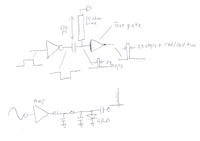nazmul6078
Newbie level 6

Hi all,
I need your help. I try to do this project of pulse generator for more than six month :-( .But could not figure out.
Pulse shapes are included in the attached file.
any of the three shape is okay. First one (Fig. 1 (a)) is better. Frequency / duration is just approximation. Tunable option is more preferable.
and also share your Ideas how i can generate and detect these kind of pulses.
P.S...I am not expert on micro-controller :-(
I need your help. I try to do this project of pulse generator for more than six month :-( .But could not figure out.
Pulse shapes are included in the attached file.
any of the three shape is okay. First one (Fig. 1 (a)) is better. Frequency / duration is just approximation. Tunable option is more preferable.
and also share your Ideas how i can generate and detect these kind of pulses.
P.S...I am not expert on micro-controller :-(



